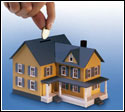Battery Myths
Thursday, July 7th, 2011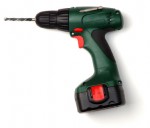 Over the years I have done my share of renovating houses. Consequently, I have managed to amass quite a number of tools. Where possible, I prefer to use cordless tools. And just like people’s misconceptions about real estate, whether buying or selling homes and acreages in Spruce Grove, Stony Plain, Parkland County, the Edmonton area or elsewhere, there are misunderstandings about how one should treat rechargeable batteries.
Over the years I have done my share of renovating houses. Consequently, I have managed to amass quite a number of tools. Where possible, I prefer to use cordless tools. And just like people’s misconceptions about real estate, whether buying or selling homes and acreages in Spruce Grove, Stony Plain, Parkland County, the Edmonton area or elsewhere, there are misunderstandings about how one should treat rechargeable batteries.
We were led to believe that early rechargeable batteries had a “memory problem”. You always had to draw down the battery completely. The battery would remember the last charge and would only charge to whatever the previous charge was. So, if you only charged your battery 10% previously but you now needed a 90% charge, the memory in the battery would only let you charge the battery 10%.
I recently found an article [quoted below] called “Battery Myths 2011” published by Makita. It explains how you should treat the batteries for your cordless tools and it spells out that if you treat your batteries as I used to up until I read this, you will reduce both the performance and the life expectancy of your cordless batteries.
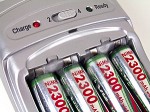 Battery Myths 2011
Battery Myths 2011
Battery Myths – Questions & Answers (from Makita)
1. What will cause my batteries to have a reduced life?
There are a number of situations that will reduce battery life. Some examples are prolonged exposure to extreme temperature conditions, over discharging the battery (running them completely dead), and incomplete charging. These are the three most common situations.
2. Do batteries have “memory”?
Makita brand batteries are of the highest quality and latest proven technology. In almost all applications for cordless tools, memory or cell set will not occur. The only possible way to create this effect in a battery is to put exactly the same load on a battery and discharge it to exactly the same point repeatedly. This can only happen in Nickel-Cadmium and Nickel-Metal-Hydride batteries used in auto-shutoff tools in a manufacturing environment where the tool is used repeatedly in the same process.
3. Should I run my batteries completely out (i.e. “dead”) before charging them?
No! This is one of the worst things you can do to a battery. It is a common misconception that you do this to eliminate “memory” in a battery. This is referred to as “Over Discharging”.
4. How does Over Discharging harm a battery?
Over discharging a battery occurs when a battery is used after reaching its predefined limit of low capacity. This may result in a cell reversal which occurs when one of the cells in sequence discharges ahead of the rest. This causes a reverse current to be applied to the discharged cell and the polarity of the battery to invert, resulting in a shortened battery life.
5. When is the best time to recharge a battery?
When you notice that your tools begin to slow down or labour, it is time to charge your battery. Ideally you should allow your battery to cool down for 5-10 minutes before you begin charging. You must allow the charger to fully charge the battery before removing it from the charger.
6. How does Over Charging harm a battery?
Overcharging a battery happens when a battery is charged longer than is required, resulting in heat buildup that can damage the battery cells, resulting in a shortened battery life.
7. Will it harm my battery if I remove it from the charger before the charge is complete?
Yes, this will greatly reduce the life of any battery.
8. Does storing batteries in a cold environment (e.g. refrigerator or freezer) extend the battery life?
No! This will increase the rate of discharge in the battery and in the long run will damage the cells inside the battery pack. Batteries perform better in a warm environment. The optimum temperature range for using and storing batteries is between 10 and 40 degrees Celsius.
9. I just bought a new battery and it is dead. Why?
Batteries that have been idle for a period of time will lose their charge. If you have a new battery that does not perform well (i.e. it doesn’t hold a charge), it has been idle for a long period of time. This does not mean that the battery is defective. Batteries will self discharge while idle. To bring the battery back to its normal state, you may have to charge and discharge the battery a number of times (up to 8 charge cycles). You must run the battery down to the point where you notice your tool begin to labour and then fully charge the battery. After repeatedly charging the battery, it should return to a normal state.
10. What is the ideal situation for operating battery powered (cordless) tools?
Have a spare (or several spare) battery available. Alternating batteries will reduce each battery’s work load and will increase operational efficiency. The ideal scenario for battery use is to have four or more batteries being run through a sequence. Battery 1 is being used in the tool. Battery 2 is cooling down after use and is awaiting charging. Battery 3 is charging. Battery 4 has been charged and is awaiting use in the tool. When Battery 1 begins to slow down, the cycle is initiated and that battery moves to the charger. This way, none of the batteries in the series are being over discharged or experience heat buildup due to constant use and charging.
The Makita article quoted above is included as a leaflet with the purchase of a Makita cordless tool. It does not appear to be online. If any of my readers, or maybe a representative of Makita, could give me a more complete citation for this article so that I can credit it properly, I would appreciate it. Please call me at 780-910-9669, email me at barry@barryt.ca, or contact me here.







 So, you’ve de-cluttered your home in Spruce Grove, Stony Plain, Parkland County or the Edmonton area. You’ve thrown out the real trash, and the things you’re keeping are neatly stored away in an appropriate place. But what do you do with the stuff that’s left, the items that are too good to just throw away but no longer needed or wanted in your home? Here are a few suggestions beyond giving things to friends and family members, or holding a garage sale:
So, you’ve de-cluttered your home in Spruce Grove, Stony Plain, Parkland County or the Edmonton area. You’ve thrown out the real trash, and the things you’re keeping are neatly stored away in an appropriate place. But what do you do with the stuff that’s left, the items that are too good to just throw away but no longer needed or wanted in your home? Here are a few suggestions beyond giving things to friends and family members, or holding a garage sale: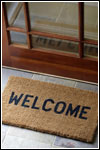 In my business, as I travel around Stony Plain, Spruce Grove, Parkland County and the Edmonton area, I see a lot of homes. Very few of those homes, if they are currently being lived in, resemble “show homes”. That’s because, let’s face it, living is messy. Evidence of everyday life is everywhere, from wet towels flung over the shower in the master ensuite to children’s artwork clipped to the fridge with magnets given away by local businesses to untidy piles of unread mail atop the dining room table to empty bottles waiting to be taken to the recycle centre, along with the smells of this morning’s breakfast bacon and a cat litter box overdue for cleaning…. You get the picture!
In my business, as I travel around Stony Plain, Spruce Grove, Parkland County and the Edmonton area, I see a lot of homes. Very few of those homes, if they are currently being lived in, resemble “show homes”. That’s because, let’s face it, living is messy. Evidence of everyday life is everywhere, from wet towels flung over the shower in the master ensuite to children’s artwork clipped to the fridge with magnets given away by local businesses to untidy piles of unread mail atop the dining room table to empty bottles waiting to be taken to the recycle centre, along with the smells of this morning’s breakfast bacon and a cat litter box overdue for cleaning…. You get the picture! Let’s start with de-cluttering. If the very word makes you shudder, you are not alone! But we all know it’s a worthy activity for many reasons, even more so if the home we’re living in is about to be put on the market.
Let’s start with de-cluttering. If the very word makes you shudder, you are not alone! But we all know it’s a worthy activity for many reasons, even more so if the home we’re living in is about to be put on the market. You’ve just moved into your new home, whether in Spruce Grove, Stony Plain, Parkland County or elsewhere, and you plan to enjoy and use your new property for many years. The last thing on your mind at this time is the expense and aggravation of unexpected repairs.
You’ve just moved into your new home, whether in Spruce Grove, Stony Plain, Parkland County or elsewhere, and you plan to enjoy and use your new property for many years. The last thing on your mind at this time is the expense and aggravation of unexpected repairs. Budget for
Budget for 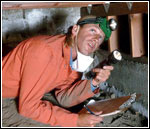 A good home inspector will spend between 2 to 4 hours (depending on the house size) inspecting the home. He or she should have equipment such as a moisture detector, carbon monoxide detector, ladders, magnifying glasses, mirrors and other specialized equipment in order to check all areas of the home and in cracks and crannies when needed. A thorough home inspection should give you a good overview of the general condition of the plumbing, electrical, roofing, insulation, windows, grading, drainage, the foundation where exposed, furnace, hot water tank, and general construction and condition of the home. It is advised that you be there for most of the inspection or at least the latter half of the inspection. That way you can see firsthand any deficiencies (minor or major) noted by the inspector. You can also ask the inspector to look more closely at any areas that are of concern to you.
A good home inspector will spend between 2 to 4 hours (depending on the house size) inspecting the home. He or she should have equipment such as a moisture detector, carbon monoxide detector, ladders, magnifying glasses, mirrors and other specialized equipment in order to check all areas of the home and in cracks and crannies when needed. A thorough home inspection should give you a good overview of the general condition of the plumbing, electrical, roofing, insulation, windows, grading, drainage, the foundation where exposed, furnace, hot water tank, and general construction and condition of the home. It is advised that you be there for most of the inspection or at least the latter half of the inspection. That way you can see firsthand any deficiencies (minor or major) noted by the inspector. You can also ask the inspector to look more closely at any areas that are of concern to you.